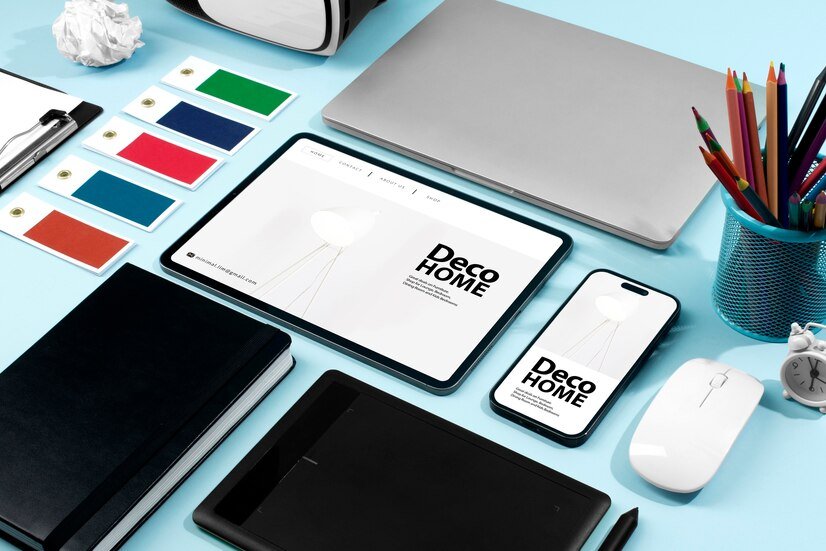Discover the secrets to creating a memorable brand design that captures attention and leaves a lasting impression. Learn key strategies, current trends, and expert tips from TechsTribune to elevate your brand’s visual identity and stand out in a crowded market.
In today’s fast-paced digital landscape, creating a memorable brand design is more crucial than ever. With countless businesses vying for attention, a strong visual identity can be the difference between blending in and standing out. This comprehensive guide from TechsTribune will walk you through the essential elements of crafting a brand design that not only catches the eye but also leaves a lasting impression on your target audience.
From understanding the psychology of color to mastering the art of visual storytelling, we’ll explore the strategies and techniques used by successful brands to create designs that resonate and endure. Whether you’re a startup looking to make your mark or an established company seeking a refresh, this article will provide you with the insights and inspiration you need to elevate your brand design game.
The Foundation of Memorable Brand Design
Understanding Your Brand’s Core
Before diving into the visual aspects, it’s crucial to have a clear understanding of your brand’s:
- Mission and Values: What drives your brand?
- Target Audience: Who are you trying to reach?
- Unique Selling Proposition: What sets you apart from competitors?
This foundation will inform every design decision you make, ensuring consistency and authenticity across all brand touchpoints.
The Power of Color Psychology
Colors evoke emotions and associations, making them a powerful tool in brand design. Consider the following:
- Blue: Often associated with trust, stability, and professionalism
- Red: Evokes excitement, passion, and urgency
- Green: Linked to growth, health, and environmental consciousness
- Yellow: Conveys optimism, clarity, and warmth
Choose a color palette that aligns with your brand personality and resonates with your target audience.
Typography: More Than Just Words
The fonts you choose speak volumes about your brand. Consider:
- Serif fonts: Traditional, reliable, authoritative
- Sans-serif fonts: Modern, clean, approachable
- Script fonts: Elegant, creative, personal
- Display fonts: Unique, attention-grabbing, expressive
Aim for a combination that reflects your brand’s personality while ensuring readability across different mediums.
Key Elements of Standout Brand Design
1. Logo Design: Your Visual Anchor
Your logo is often the first point of contact between your brand and potential customers. To create a memorable logo:
- Keep it simple and scalable
- Ensure it works in both color and black-and-white
- Make it versatile enough to work across various platforms
- Consider negative space for added depth and meaning
2. Consistent Visual Language
Develop a cohesive visual language that extends beyond your logo:
- Create a brand style guide to ensure consistency
- Define a signature image style for photography and illustrations
- Establish consistent iconography and graphical elements
3. Embracing White Space
Don’t underestimate the power of white space (or negative space) in your designs. It can:
- Improve readability and comprehension
- Create a sense of sophistication and luxury
- Draw attention to key elements
4. Responsive Design
In the age of multiple devices, your brand design must be responsive:
- Ensure your logo and visual elements adapt to different screen sizes
- Create mobile-first designs that scale up, not down
- Consider how your brand appears on various social media platforms
Current Trends in Brand Design
Stay ahead of the curve by incorporating these trending elements:
- Minimalism and Simplification: Brands are stripping down to their essentials for clarity and impact.
- Bold Typography: Large, expressive fonts are making statements and capturing attention.
- Gradients and Duotones: Adding depth and dimension to flat designs.
- Authentic and Diverse Imagery: Embracing real, diverse representations in brand visuals.
- Animated Logos: Bringing static designs to life for digital platforms.
- Eco-Friendly and Sustainable Visuals: Reflecting growing environmental consciousness.
- Nostalgia and Retro Revival: Tapping into familiar, comforting aesthetics from the past.
Strategies for Creating Memorable Brand Designs
1. Tell a Story
Use your brand design to tell a story:
- Incorporate elements that reflect your brand’s history or values
- Use visual metaphors to convey complex ideas simply
- Create a narrative arc across your brand touchpoints
2. Be Distinctive
Stand out by:
- Avoiding clichés and overused design elements in your industry
- Creating a unique visual hook that sets you apart
- Developing a distinctive brand voice that complements your visuals
3. Embrace Flexibility
Create a design system that’s adaptable:
- Develop variations of your logo for different contexts
- Create a modular design system that can evolve with your brand
- Allow for seasonal or campaign-specific variations while maintaining core brand elements
4. Leverage User-Generated Content
Encourage brand loyalty and authenticity by:
- Creating design elements that users can interact with or customize
- Featuring user-generated content in your brand visuals
- Developing hashtag campaigns that align with your visual brand
5. Prioritize Accessibility
Ensure your brand design is inclusive:
- Use high-contrast color combinations for better readability
- Choose fonts that are easily legible for all users
- Consider how your design appears to colorblind individuals
Implementing Your Brand Design
Once you’ve created your memorable brand design, it’s crucial to implement it effectively:
- Roll Out Gradually: Introduce new design elements strategically to build anticipation and avoid confusion.
- Educate Your Team: Ensure all employees understand the new brand guidelines and their importance.
- Update All Touchpoints: From your website to business cards, update all brand touchpoints consistently.
- Monitor and Gather Feedback: Pay attention to how your audience reacts to the new design and be open to refinements.
- Protect Your Brand: Consider trademarking key design elements to protect your visual identity.
Conclusion
Creating a memorable brand design that stands out is both an art and a science. It requires a deep understanding of your brand’s core values, your target audience, and the ever-evolving design landscape. By focusing on authenticity, consistency, and strategic innovation, you can develop a visual identity that not only captures attention but also builds lasting connections with your audience.
Remember, great brand design is not static. It should evolve with your company and your audience while maintaining its core essence. Stay true to your brand’s personality, be willing to take calculated risks, and always keep your audience at the heart of your design decisions.
As you embark on your brand design journey, let these insights from TechsTribune guide you towards creating a visual identity that’s not just seen, but remembered and cherished by your audience.
FAQs
Q1: How often should I update my brand design?
A: While there’s no fixed rule, it’s generally recommended to review your brand design every 3-5 years. However, major changes should only be made if:
- Your current design no longer reflects your brand’s values or offerings
- You’re targeting a new audience
- Your design looks outdated compared to competitors
- You’re expanding into new markets
Q2: Can I create a memorable brand design on a budget?
A: Absolutely! While professional design services can be valuable, you can create a strong brand design on a budget by:
- Using online design tools like Canva or Adobe Express
- Focusing on one or two key design elements to start
- Leveraging free or low-cost stock images and fonts
- Engaging with design communities for feedback and ideas
Q3: How important is color in brand design?
A: Color is crucial in brand design as it:
- Evokes emotions and associations
- Improves brand recognition (by up to 80%, according to some studies)
- Differentiates you from competitors
- Conveys important information about your brand personality
Choose your brand colors thoughtfully and use them consistently across all platforms.
Q4: Should my brand design be trendy or timeless?
A: Ideally, your brand design should strike a balance between trendy and timeless elements. Aim for a core design that’s timeless, with the flexibility to incorporate trendy elements in secondary designs or campaign-specific materials. This approach allows you to stay relevant without requiring frequent major overhauls.
Q5: How can I ensure my brand design translates well across different cultures?
A: To create a globally appealing brand design:
- Research color meanings in different cultures
- Avoid symbols or gestures that may be offensive in some cultures
- Use universally recognizable icons and imagery
- Consider creating localized versions of your brand for specific markets
- Test your design with diverse focus groups












